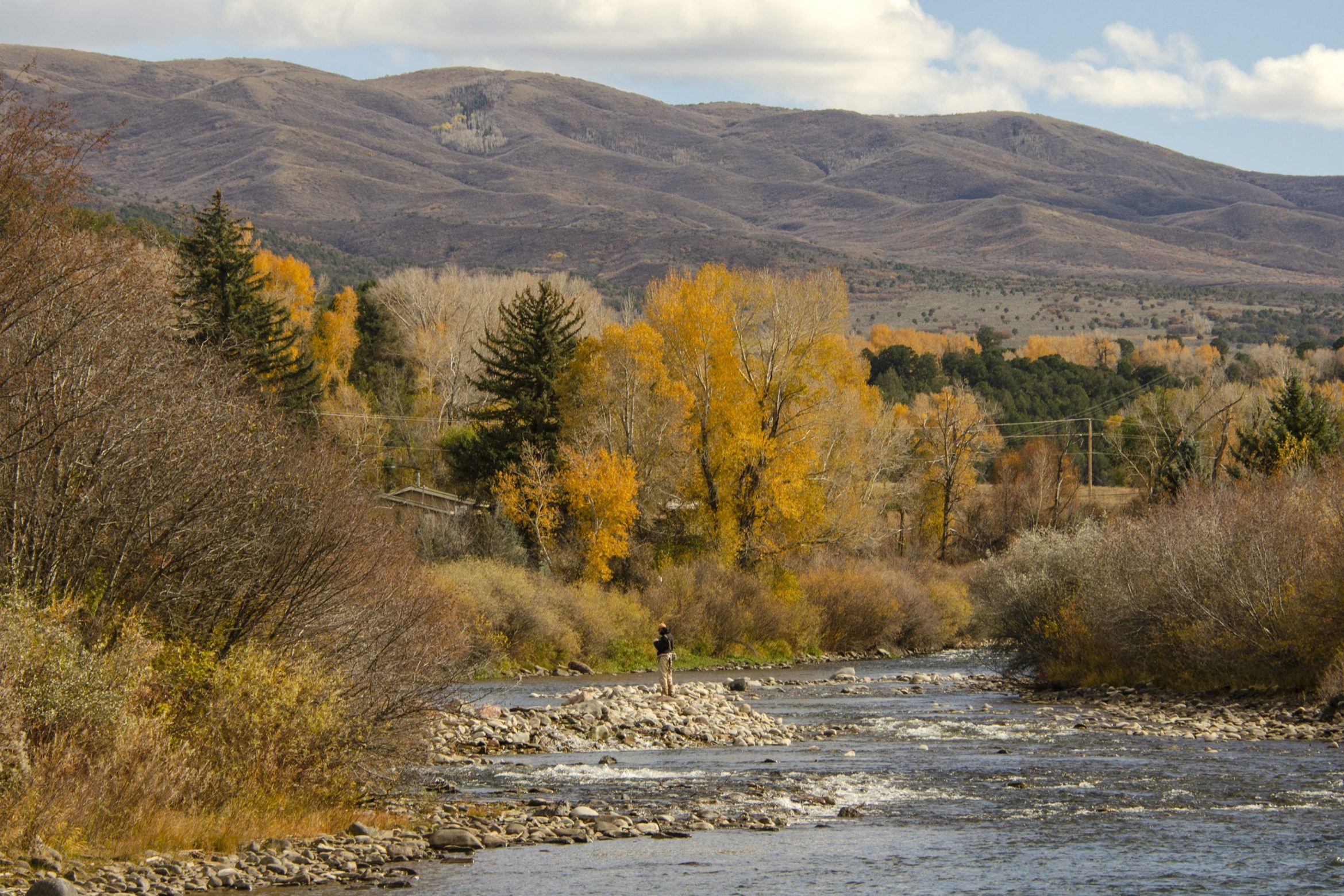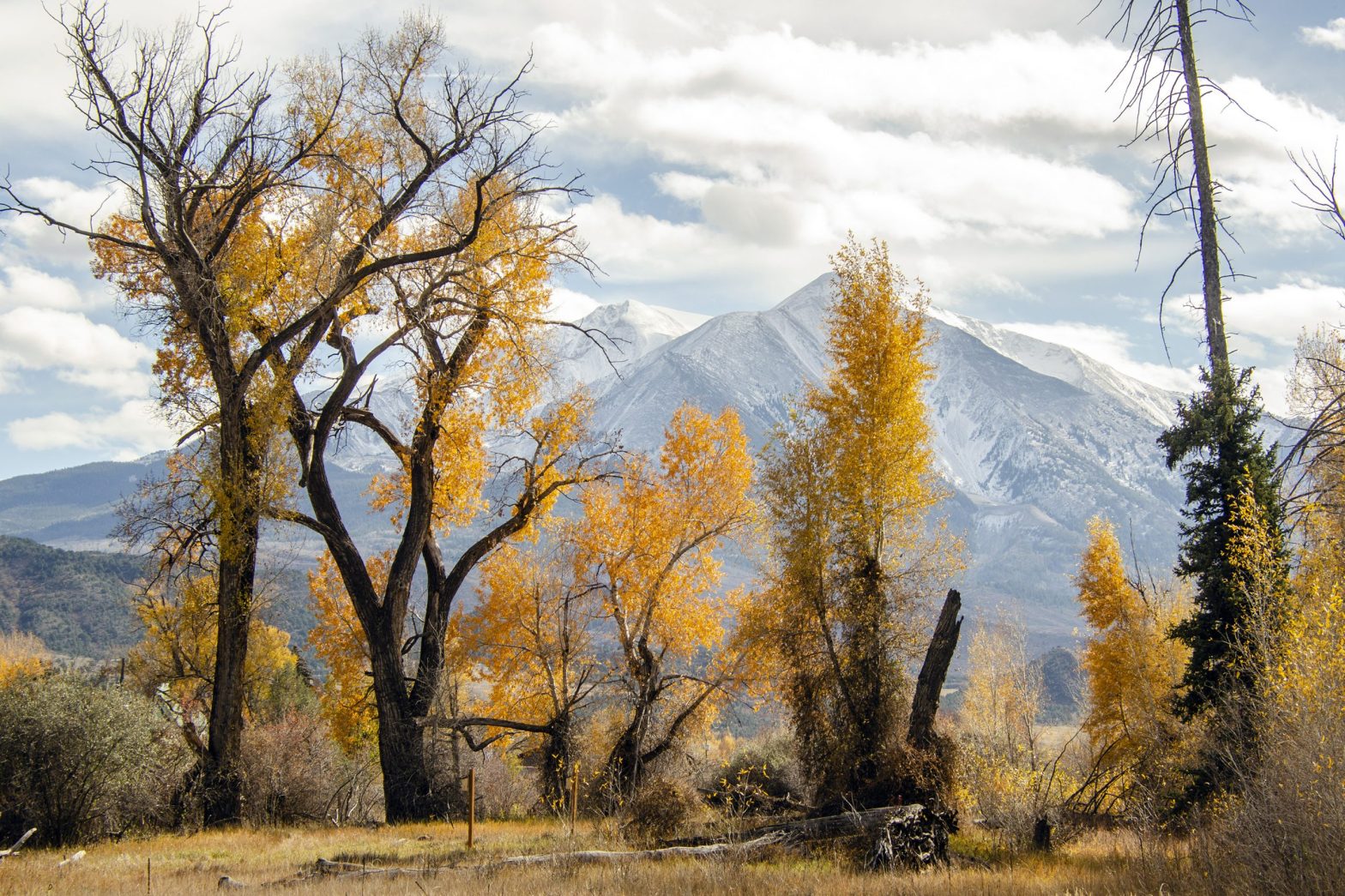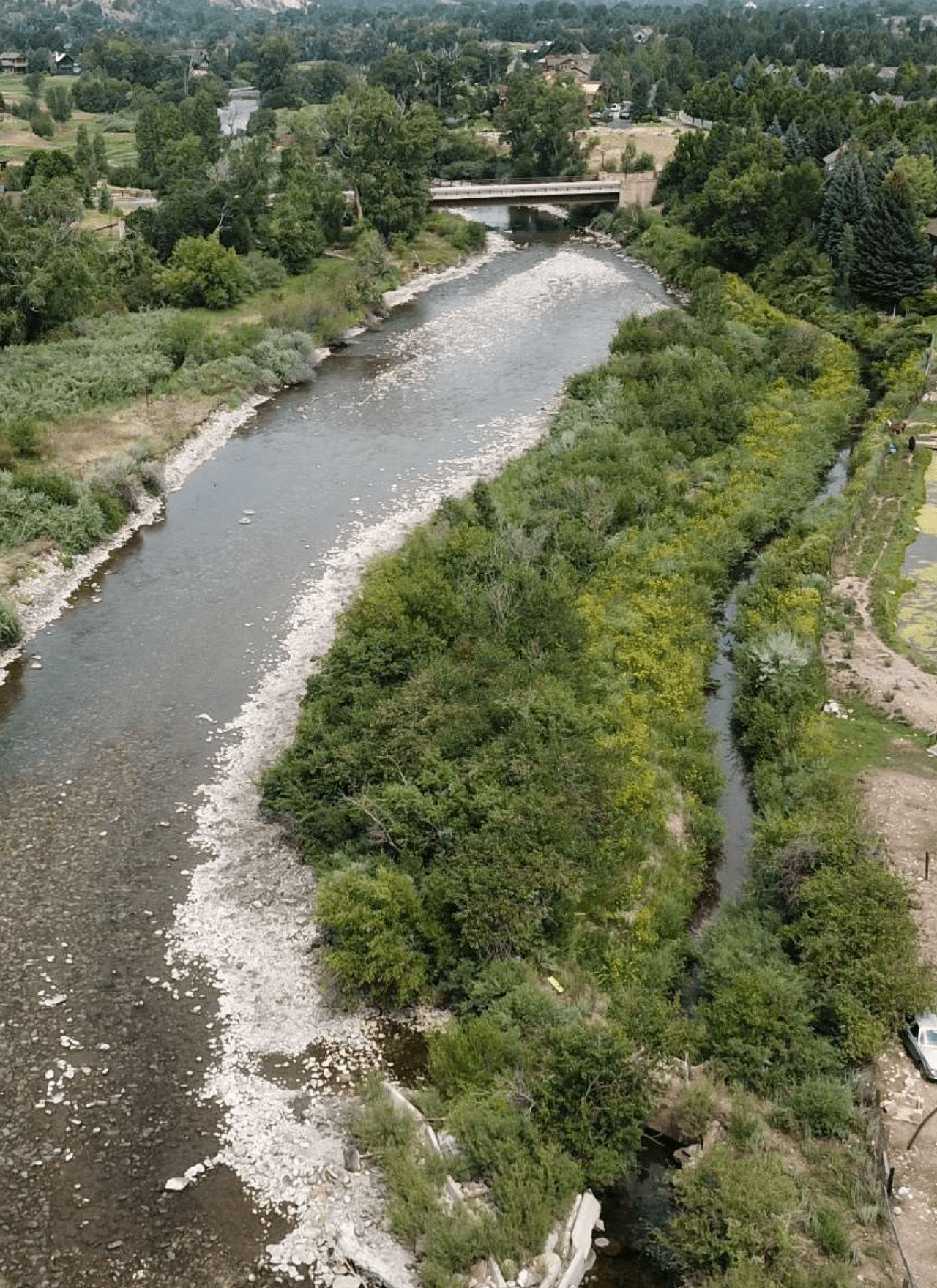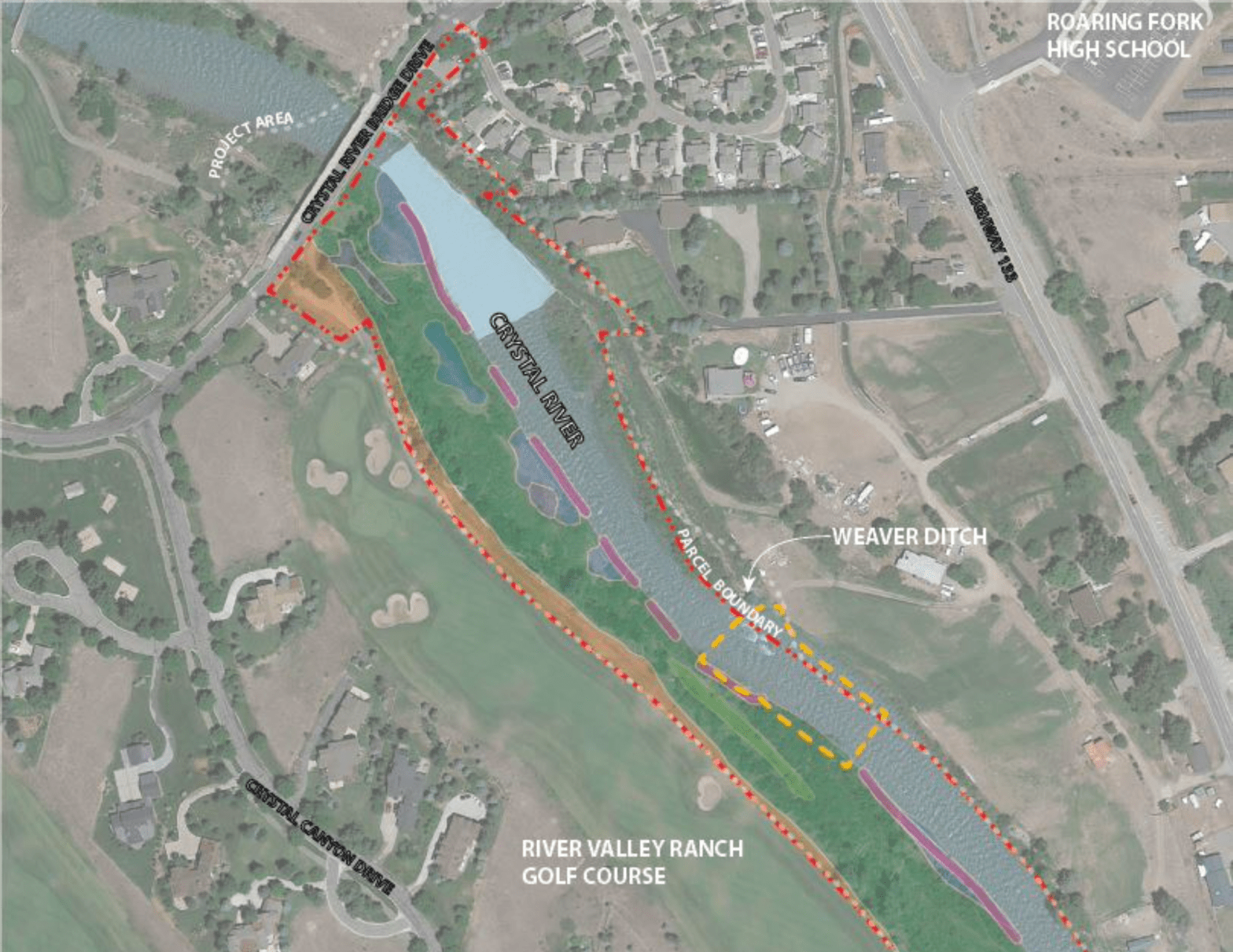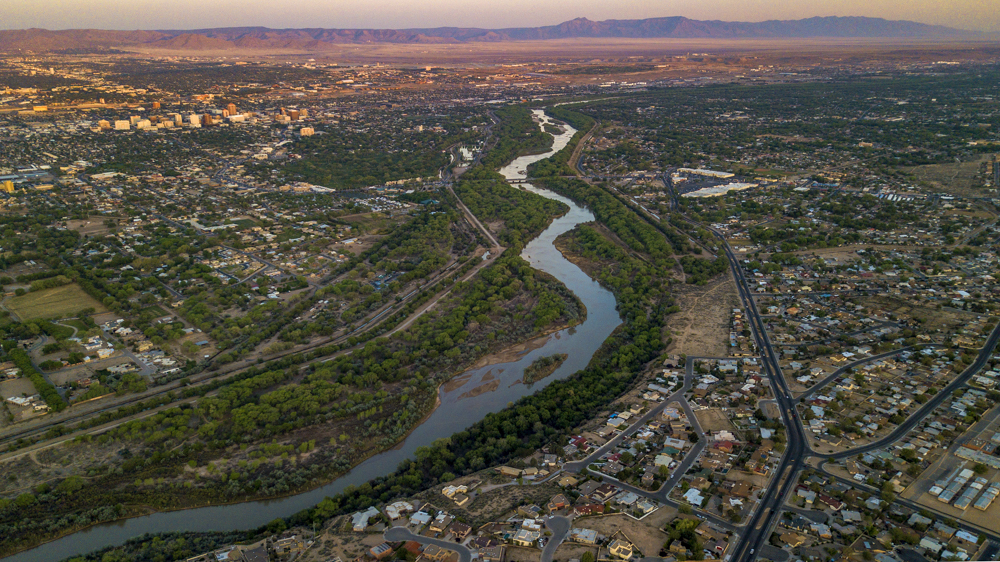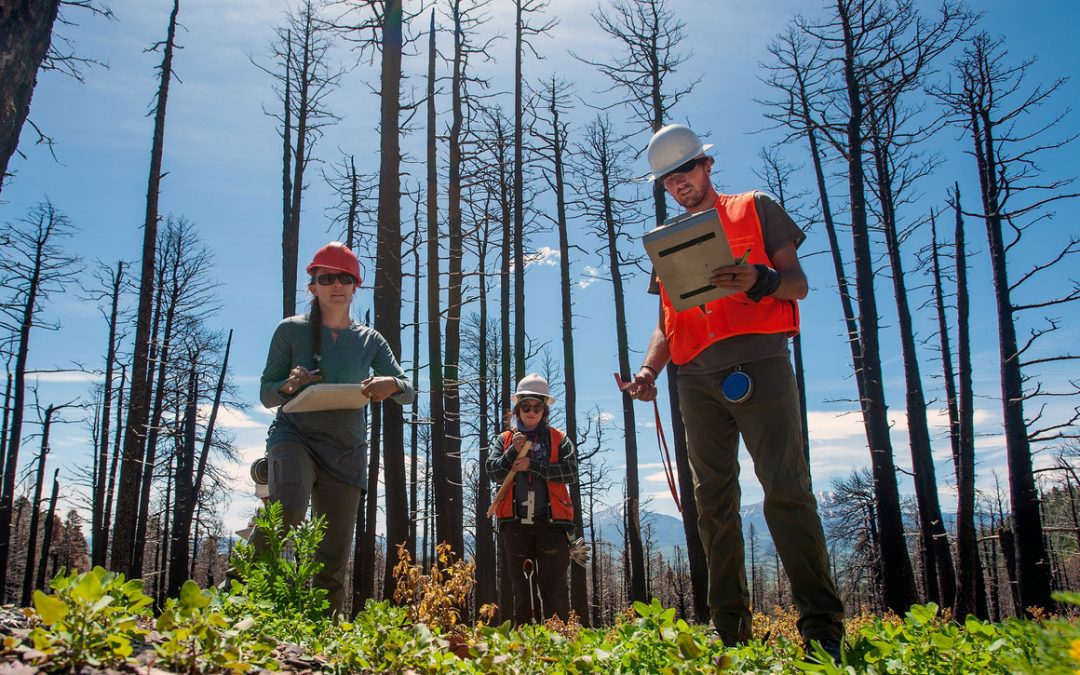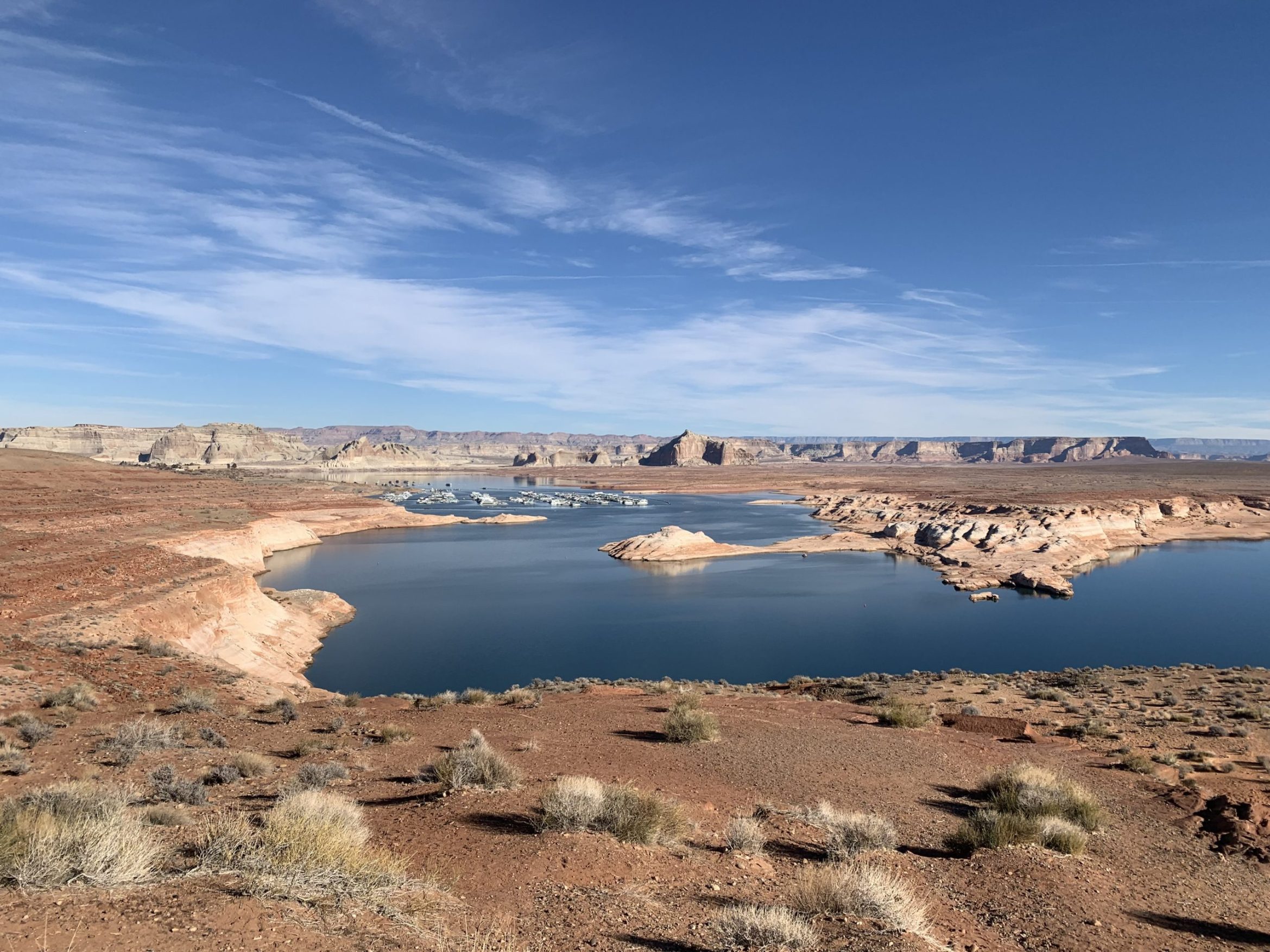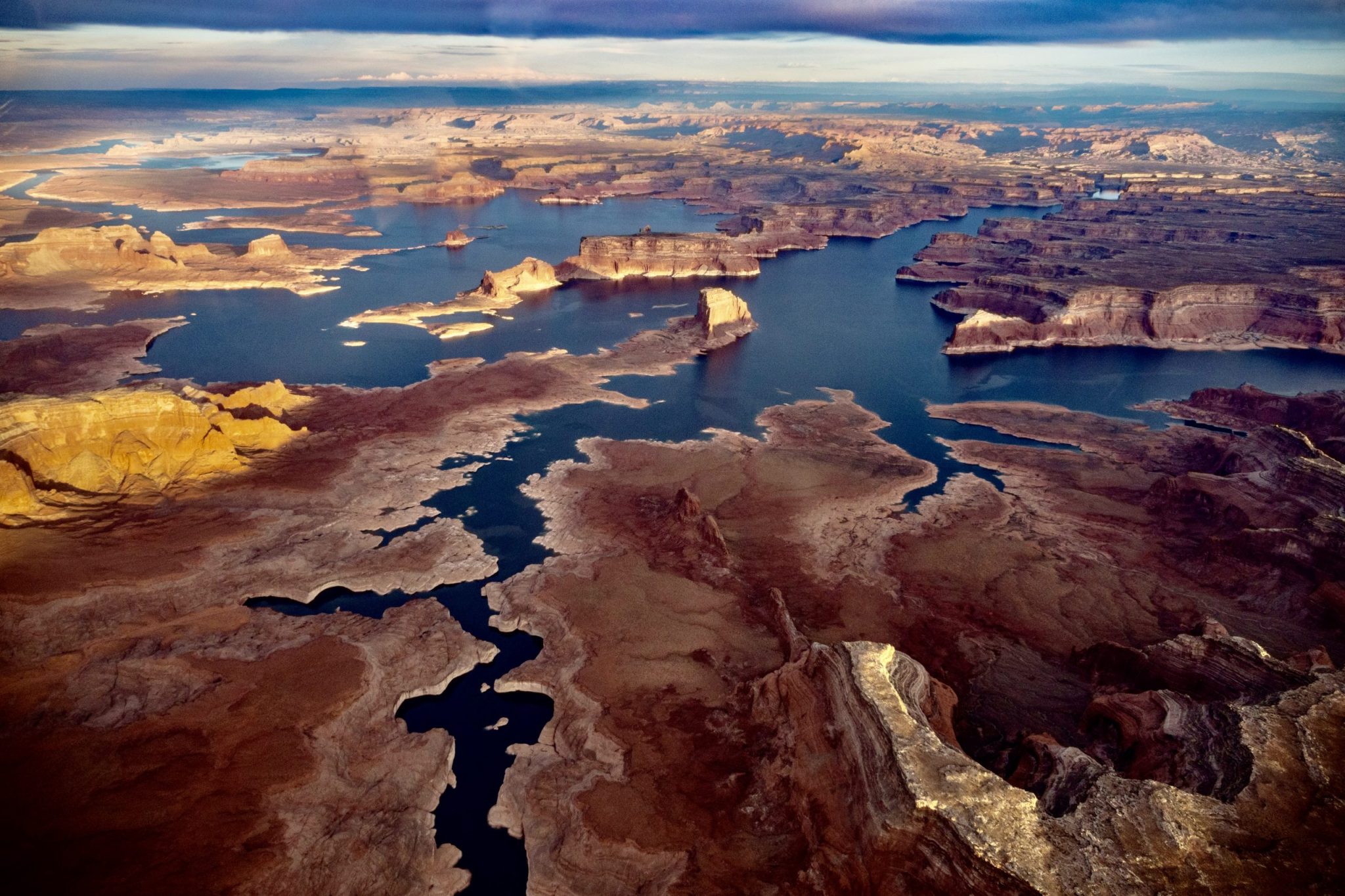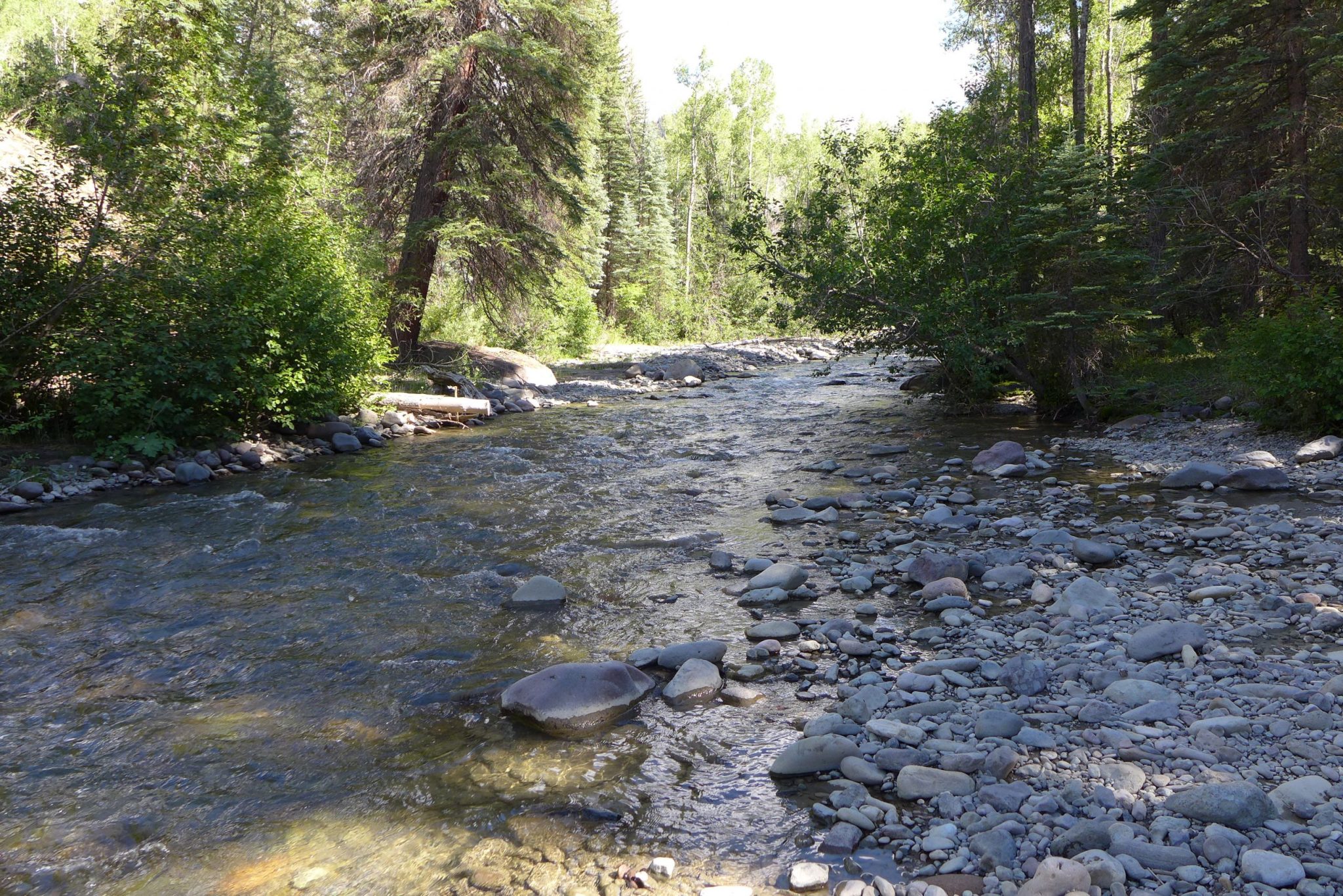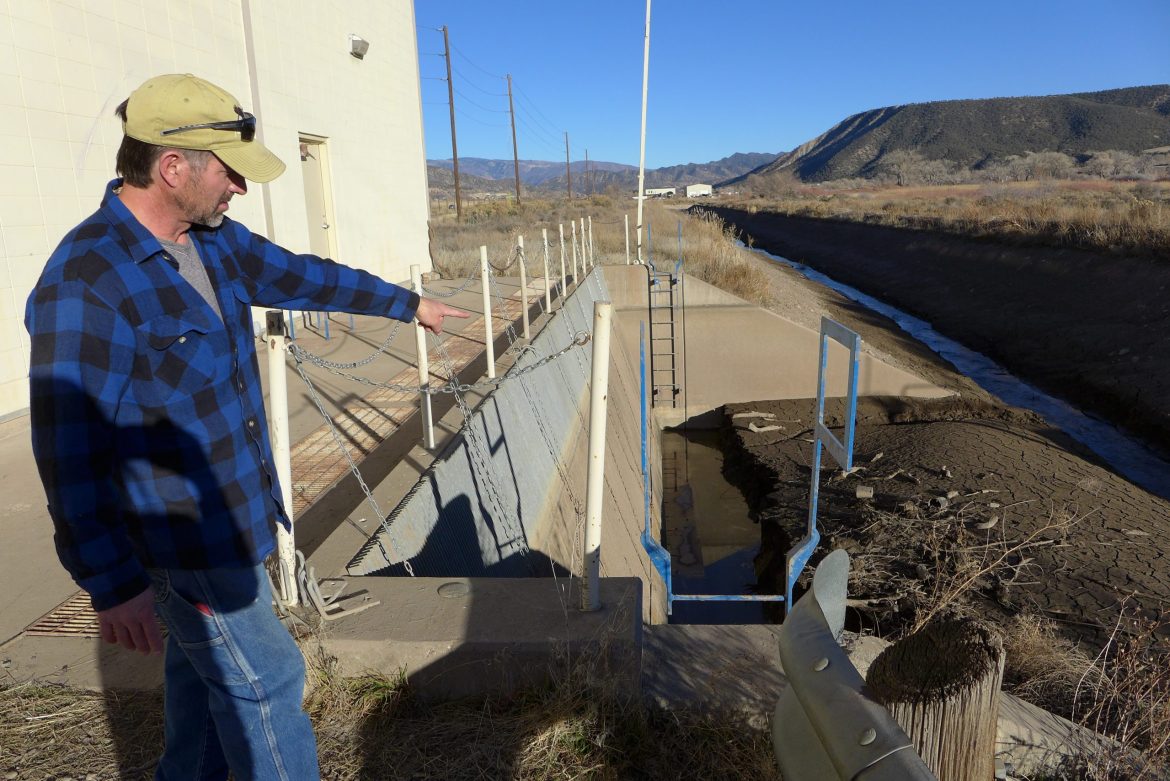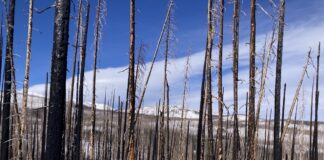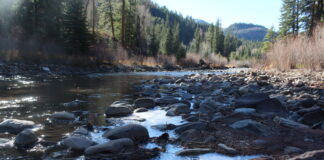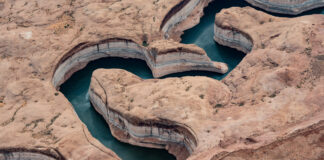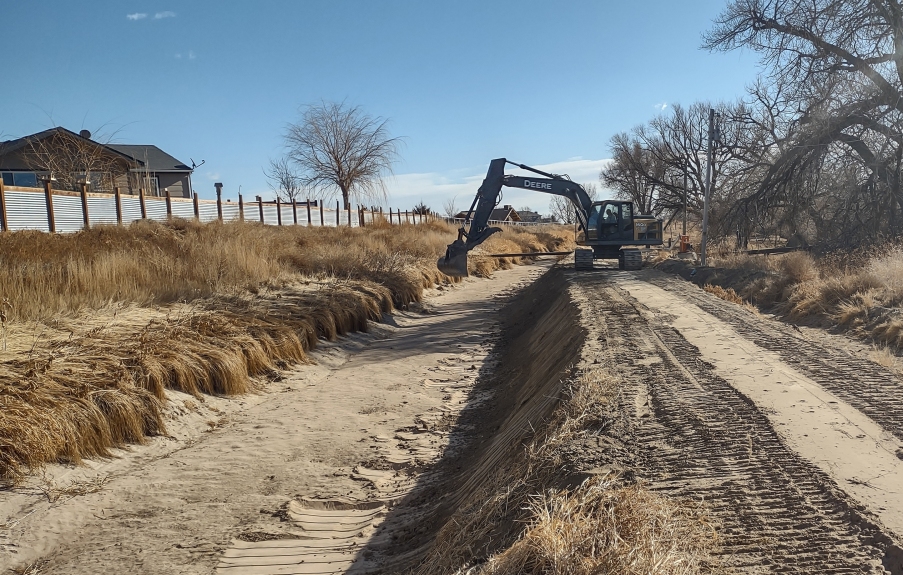
Editor’s Note: This week, in a special collaborative report with nine other Colorado news outlets, Fresh Water News and the Colorado News Collaborative examine Colorado’s hallmark “first-in-time, first-in-right” prior appropriation doctrine. The doctrine is coming under increasing scrutiny as the state’s rivers and reservoirs dry out. We go on the ground from Evans to San Luis to Cortez to see how the venerable doctrine, which has shaped water distribution across the West, is working.
This report is based on the work of the nine media outlets, Fresh Water News, and the Colorado News Collaborative, undertaken as part of a water news training program for journalists. The journalists are: Trevor Reid, The Greeley Tribune; Michael Elizabeth Sakas, Colorado Public Radio; Zack Newman, 9News; Kate Perdoni, Rocky Mountain PBS; Jim Mimiaga, The Cortez Journal; Philip Poston, the Aurora Sentinel; Olivia Emmer, The Sopris Sun; Priscilla Waggoner, the Valley Courier; and Tara Flanagan, the Ark Valley Voice. This program was made possible by a grant from the Colorado Media Project and the Denver-based Gates Family Foundation.
By Jerd Smith
In Evans, Colo., four miles south of Greeley, houses are shooting up.
Once a quiet farm town, Evans is scrambling to come up with enough water to slake the thirst of hundreds of new homeowners, drawn here by comparatively affordable housing.
Evans City Manager Jim Becklenberg says the town can supply the faucets of its 22,000 residents.
“We have enough water in our water portfolio to meet the needs of our existing population,” he said.
But future water needs will have to be met by developers, who are required to buy water and bring it to the city for use. It’s an expensive process that can often mean nearby irrigated farmland with old, high value water rights is bought and then dried up so the water can be transferred to cities.
While large northern Colorado cities like Loveland, Greeley and Fort Collins have older water rights, and have been able to buy extra water over the years, small cities like Evans haven’t had enough money to do so, Becklenberg said.
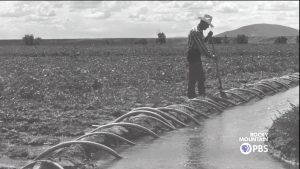
Gold, silver, land
Gold, silver, land
In Colorado, acquiring water is a complicated undertaking due in part to Colorado’s hallmark “first-in-time, first-in-right” water law, known as the prior appropriation doctrine.
The doctrine dates back 150 years to when Colorado was a territory rich in gold, silver and land, but not water. It evolved to ensure no one could hoard water and deprive others of its use. Any farmer, miner or homesteader could claim water on a stream, divert that water, and put it to use, establishing a place in the priority system of water rights. It was a common person’s dream and had a certain fairness to it, ensuring that whoever got in line at the drinking fountain first, as University of Denver law professor Tom Romero puts it, gets to drink first. Everyone else takes their turn later.
But the doctrine is coming under increasing scrutiny as the state’s rivers and reservoirs dry out and tens of thousands of people continue moving here every year. Is prior appropriation up to the task of divvying up the state’s water in an era of increasingly frequent and severe drought conditions? It depends on whom you ask.
David Robbins, a water attorney who represents water districts in some of the state’s most water-strapped regions, such as the Rio Grande and Lower Arkansas basins, says the prior appropriation system is a sturdy, legally tested allocation system.
“To people who want water and don’t have water, the system doesn’t feel fair because they can’t have what they want. But that would be true under any system,” Robbins said. “Somebody has to make decisions and water has to be allocated. It doesn’t and can’t satisfy everybody’s desires because water is inherently finite.”
In Colorado, a water right is a private property right that can be bought and sold, with certain conditions. Older, more senior water rights, because they are entitled to water first during dry times, are more valuable because they are more reliable.
Water rights are officially entered in the system only after they’ve gone through the state’s special water courts, where the law requires that diversion histories are certified, that diversion amounts are quantified, that times of use are established, and that other water systems on the same stream are not injured by a new water claim. The law also requires that water only be applied toward a list of legally defined “beneficial uses,” including farming, mining, drinking water, and environmental flows, among others.
Benchmarks fall
Pressure on the system is rising as water supplies hit record lows. The Colorado River, for instance, may see a crucial water benchmark fall as the river’s flows continue to decline. The river system supplies Colorado communities and growers all across the state. In as little five years, according to climate researcher Brad Udall, the Upper Colorado River Basin states of Colorado, Wyoming, Utah and New Mexico, may not be able to deliver the 7.5 million acre-feet of water they are required to annually to Arizona, California and Nevada under the terms of the 1922 Colorado River Compact.
If that happens, many Colorado communities with water rights junior to 1922 could see their water supplies slashed so that the state can meet its legal obligations.
And a movement known as the Rights of Nature for Rivers is suggesting that Colorado’s rapidly drying streams need better protection under the prior appropriation system, such as giving first dibs on streamflows to rivers to protect their ecological value instead of to whomever has the oldest right to pull that water out.
“The movement would claim that keeping the water in the river is beneficial itself and to the non-human species and the ecosystem,” said Gary Wockner, one of the movement’s founders. “It is an expansion of prior appropriation’s law that recognizes the original user of the river was the river itself, and the river has the right to be in the discussion and in court.”
Thousands of water rights
Colorado has more than 164,000 water rights on file, according to data analyzed by 9News.
Agriculture uses roughly 86% of Colorado’s water and the state’s oldest, most historical water rights are found in a small, communal farm community that includes San Francisco and San Luis in the Rio Grande Basin’s San Luis Valley.
Here, water use dates back to the 1600s, but those water rights weren’t brought into the state’s prior appropriation system until the mid-1800s when water officials still rode on horseback to check diversion structures and irrigation ditches.
To the families of the San Luis Valley, the acequias, as their ditches are known, are a liquid thread feeding a farming culture that existed long before Colorado became a state.
And many of the ranchers here, including Charlie Quintana, believe the prior appropriation doctrine, known informally as the priority system, has stood the test of time.
In his pocket is a list of the water rights and their dates for the area’s acequias. “The acequias are the priority system,” he says.

Rights on paper
Native American Tribes too hold some of the oldest water rights. And prior appropriation has profoundly affected the way those tribes’ have developed.
In Southwestern Colorado, just miles from the New Mexico state line, the Ute Mountain Utes, like dozens of Native American tribes, have valuable, very old water rights that were granted as part of the Winters Doctrine, a landmark 1908 U.S. Supreme Court decision that gave tribes enough water to fulfill the needs of their reservations. That decision backdated tribal water right priority dates to the date the reservation was established. Theirs dated back to 1868. But for more than a half-century, the tribe never had the money or the expertise to claim the water formally in Colorado’s water courts and to develop the measuring devices, dams and ditches required to put it to beneficial use, as the prior appropriation system requires.
As a result, in a 1988 water rights settlement, the tribe traded its 1868 paper water rights on the Mancos River in exchange for more junior wet water rights in the Dolores Project, a federal storage system on the Dolores River that stores water in McPhee Reservoir, said Mike Preston, a water consultant for the tribe.
Now one of the tribe’s largest employers, the Ute Mountain Ute Tribe Farm and Ranch Enterprise, has a water right that is much younger and therefore less valuable.
This year, it received just 10% of its water, as did other farmers in the Dolores Project. If it had been able to put its 1868 water rights to beneficial use 150 years ago, it would have still been affected by the drought, but it would have had more water.
Now, as the drought continues, the tribe is redoubling its efforts to study and claim all of its water rights, including on the San Juan River, said Ute Mountain Ute Chairman Manuel Heart.
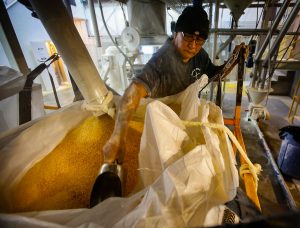
Cities double down too
Like other junior water rights holders, the fast-growing City of Aurora, Colo., has worked hard to secure a seat at the water table, spending millions of dollars buying older water rights when it can find them, and developing new junior water supplies when it can.
“Aurora got into the water game late,” said Greg Baker, Aurora Water’s manager of public relations.
Aurora was wholly served by the city and county of Denver until 1954 when Denver Water put into place a “blue line” no longer granting permits for new taps in the ever-growing metropolitan area, leaving parts of Aurora out of Denver’s service region.
The completion of phase one of the Homestake Reservoir, which the city shares with Colorado Springs, was in 1967 and, with that, Aurora was able to become completely self-reliant when it came to supplying water to its residents.
Though Aurora has been aggressive in buying water rights and building storage, 10% of its supplies come from reusable water developed through its $637 million Prairie Waters Project. Completed in 2010 the large-scale reuse system captures Aurora’s wastewater after it is released into the South Platte River, then filters it through a system of wells and sand and gravel pits, treating it and mixing it with fresh water before it is delivered to residents.
Without its large tax base, Aurora would have had a much harder time developing a reliable water system in modern times when most of the state’s oldest water rights are already taken.
Pretty smug
Even communities with older rights, though, are seeing supplies dry up as climate change and drought sap stream systems where water once was plentiful.
Bill Fales has been raising cattle on Cold Mountain Ranch in Carbondale, Colo., since he moved here in 1973. In his 48 years working the approximately 600-acre mosaic of pastures, of which around 250 are irrigated, Fales has experienced some tough years, when the Crystal River ran low, but largely felt confident about having the water he needed.
That confidence has been eroding.
“2018 was really bad, 2020 was really bad, 2021 was pretty terrible. I used to be pretty smug and think, ‘Well, hell, my right’s 1883. I’ll still be standing out here with my shovel, irrigating my alfalfa, and the guys in Denver will turn on the faucet to brush their teeth and nothing will come out,” Fales said.
But these days he’s worried that little will help farm and urban users with water shortages that are beginning to appear.
Other subdivisions in the Crystal River Valley have long relied on wells next to the river. But in the drought of 2018, the subdivisions’ taps ran dry. They scrambled to drill a new well under their 1971 water right. But that would not be enough. Soon they learned that their water use, for the first time ever, was harming a senior 1902 water right holder farther down the river system.
Now the homeowners are buying water to offset their own water use under a state-required plan to prevent any more harm to the senior water right holders on the stream.
Taxing itself to survive

Far to the southeast, in the San Luis Valley, water too is in short supply. Here, in what is the second-largest potato growing economy in the nation, farmers are under orders to reduce groundwater pumping to protect the Rio Grande River and ensure Colorado can meet its legal obligation to deliver millions of gallons of water to New Mexico and Texas.
More than a decade ago, farmers voted to tax themselves to solve the looming legal water crisis, using the revenue to buy irrigated farmland and dry it up, so that unused water could remain in the aquifer that supplies the river. But the relentless series of droughts the state has endured since 2002 have wiped out much of the farmers’ work to restore the aquifer. If the situation doesn’t improve soon, the state could shut off thousands of irrigation wells.
To prevent that from happening, farmers will vote next year on whether to dramatically raise penalties for over-pumping from $150 per acre-foot to $500, an increase long-time farmer Don Shawcroft believes will provide the necessary jolt to convince valley farmers to change their irrigation strategies.
“This valley relies on agriculture, and agriculture relies on water. If that water is shut off or worse – used up – none of these towns will survive,” he said. (Editor’s note: Shawcroft sits on the board of trustees for Water Education Colorado, which sponsors Fresh Water News.)
The challenge will come
Whether prior appropriation will weather the coming dry years remains to be seen.
“What prior appropriation does really well is provide certainty. It’s a sophisticated system, but in principal and theory it’s simple,” says DU’s Romero. “We know that when there is not enough water those at the front of the line get their water. That creates predictability and certainty. Historically, it has also provided opportunity,” he said.
But the challenge will come, he said, “when you envision uses that aren’t prescribed, or if you need access to the water and need to reallocate it. Running it through our water court system is pricey. It requires expertise and investment…who is in the best position to cover those costs?
“It’s either big private water developers and the state, or water utilities like Denver Water and Aurora Water. They are in the best position to cover those costs, which raises a big question: Is this market scheme going to serve the public interest?”
Ask someone on the ground
Tara Flanagan is secretary of the Bowen Ditch Company in the Upper Arkansas River Basin. Keeping this 140-year old ditch functioning requires backbreaking labor, pre-dawn emails between neighbors, and faith that each spring the snow will fall, melt, and flow down to the handful of families still relying on it for water.
Flanagan, who is also a reporter for the Ark Valley Voice, describes the prior appropriation system as her “frenemy.”
“In a perfect world, nobody would need to care one iota about the words prior appropriation, which at first glance is an eye-glazing term that has spent entirely too much time living in the heads of politicians and water lawyers – as well as the tattered log book for the Bowen Ditch Company that sits under my desk.
“But people have died over prior appropriation, so there’s that.
“Prior appropriation means this,” she continues. “The date when your water rights were officially filed with the State of Colorado has everything to do with you getting water on your fields and how long you are able to have it. Unlike birth certificates and things stored in your refrigerator, the earlier your date, the better.”

Fresh Water News is an independent, nonpartisan news initiative of Water Education Colorado. WEco is funded by multiple donors. Our editorial policy and donor list can be viewed at wateredco.org.
The journalists are: Trevor Reid, The Greeley Tribune, treid@greeleytribune.com; Michael Elizabeth Sakas, Colorado Public Radio, msakas@cpr.org; Zack Newman, 9News, zack.newman@9news.com; Kate Perdoni, Rocky Mountain PBS, kateperdoni@rmpbs.org; Jim Mimiaga, The Cortez Journal, jmimiaga@the-journal.com; Philip Poston, the Aurora Sentinel, pposton@sentinelcolorado.com; Olivia Emmer, the Mt. Sopris Sun, olivia@soprissun.com; Priscilla Waggoner, the Valley Courier, pwaggoner@alamosanews.com; and Tara Flanagan, the Ark Valley Voice, tara@arkvalleyvoice.com.
The Water Desk’s mission is to increase the volume, depth and power of journalism connected to Western water issues. We’re an initiative of the Center for Environmental Journalism at the University of Colorado Boulder. The Water Desk launched in April 2019 with support from the Walton Family Foundation. We maintain a strict editorial firewall between our funders and our journalism.



